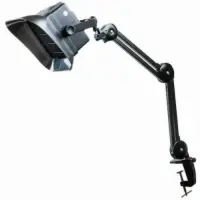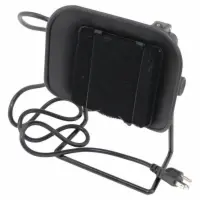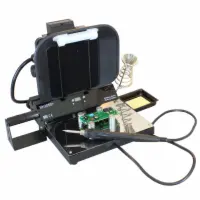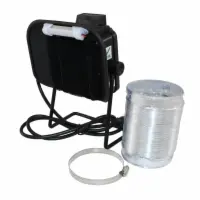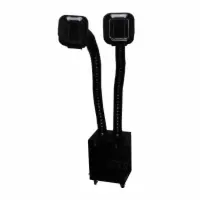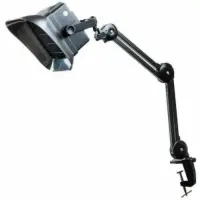Fume Extractors
Filters
Fume extractors remove smoke, dust, and other hazardous contaminants from the air. They are essential safety equipment for soldering, welding, 3D printing, laser-cutting, or any kind of activity that generates toxic fumes.
Unlike typical standalone home air purifiers, fume extractors (sometimes called smoke absorbers or smoke eaters) usually have long, retractable arms and venting systems that can be adjusted and positioned beside the equipment emitting harmful fumes. The fume extractor’s internal fans, which suck in air to be filtered, are generally more powerful as well.
Some industrial-grade fume extractors are immobile once installed, but many fume extractors are portable and can attach to or sit atop a workbench along with your soldering equipment or other tools. You might even find a soldering station with the smoke absorber built-in.
Fume extractors come in a variety of forms, but the majority follow the same basic principle: the extractor uses the negative draft of a fan to pull in hazardous fumes, which then pass through one or multiple filters before being released. The fume extractor might include long, flexible, sometimes retractable vents that connect to a high-powered fan and filtration system on the floor.
The most common fume extractor filters are activated carbon and HEPA. HEPA stands for High-Efficiency Particulate Air, and true to its name, these filters are incredibly effective at capturing tiny particles like viruses, mold, pollen, dust, and other airborne molecules as small as 0.3 microns. However, HEPA filters are limited when it comes to absorbing and filtering Volatile Organic Compounds (VOCs) and odors.
While not equipped to remove fine particles, activated carbon neutralizes and removes what HEPA cannot, such as VOCs, gasses, smoke, and unpleasant odors from the air. Some fume extractors forgo HEPA filters altogether and only use activated carbon.
Industrial or high-powered fume ventilation systems may require extensive installation, but many fume extractors (especially solder fume extractors) are mobile and easy to set up. For example, benchtop fume extractors require almost installation and are relatively small units that sit on top of the workbench.
Another type of portable fume extractor, sometimes called a soldering fan, attaches to a table (usually via a clamp) and has a long, flexible arm with the fan, filters, and exhaust hood at the end. These soldering fume extractors forgo the need for a vent and instead position the fan and filters next to the equipment, as opposed to the harmful smoke being vented through to a fan and filters.
Another type of high-powered but mobile fume extractor may have multiple long, adjustable vents that attach to a powerful fan and filtration system that rests on the floor. These industrial fume extractors typically include both activated carbon and HEPA filters and have wheels at the base to help the portability.
Yes! Long-term or heavy exposure to soldering fumes can lead to occupational asthma and other serious chronic illness. Even in the short-term, soldering fumes can cause headaches, dizziness, irritated skin and lungs, and other health risks.
Working in a well-ventilated area, fanning away the smoke, or wearing a mask can only do so much. For this reason, we always recommend a fume extractor for soldering, welding, or other applications where the air can become contaminated with volatile gaseous compounds.

